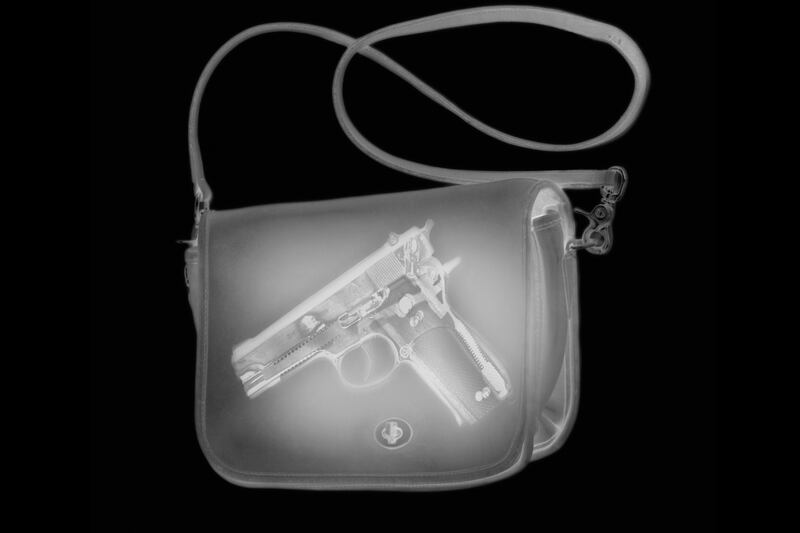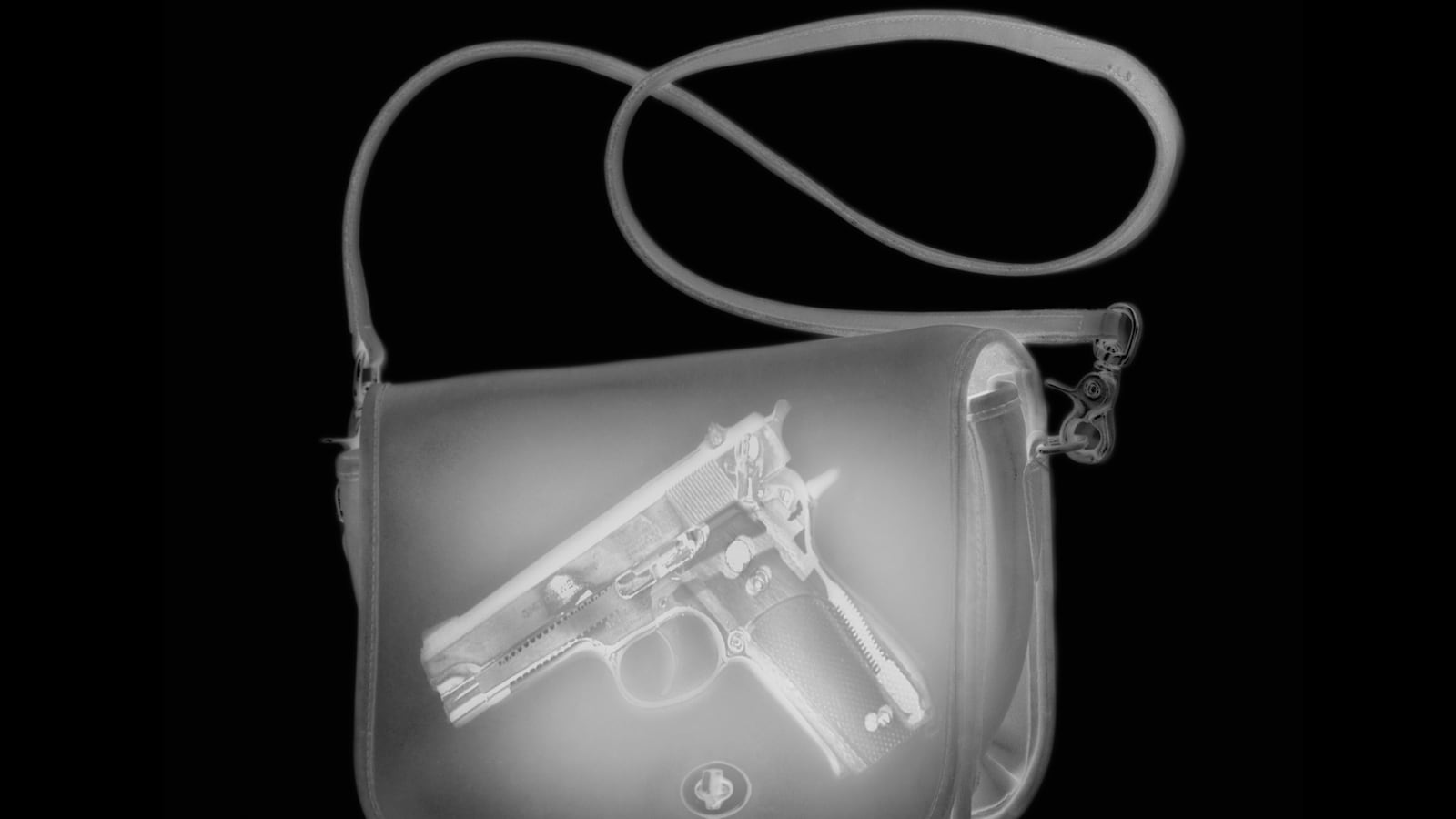I first got involved with gun violence prevention after the 1999 massacre at my high school, Columbine, which claimed the life of my former basketball coach Dave Sanders, along with 12 students. At his memorial service, the grief on the faces of my old teachers was horrible to see. A year later I went to the Million Mom March in Washington, D.C., and eventually became a board member of the Brady Campaign to Reduce Gun Violence.

The campaign has tried to bring some common sense into our nation's debate on gun violence: everything from asking if there's a gun where your kids play to advocating that Starbucks change its policy of allowing people to openly carry guns in its coffee shops. We protested their policy and hand-delivered a petition signed by 30,000 people in 2010.
After the latest massacre at Sandy Hook Elementary School in Newtown, I listened to the NRA's Wayne LaPierre say, "The only thing that stops a bad guy with a gun is a good guy with a gun." I decided to find out what it felt like to be that "good guy" by carrying a gun everywhere I went for a month, doing the absolute minimum that's legally required.
I was appalled at how easy it was for me to get a gun without a single second of training, and I wrote four articles about it. Over 30 days, I followed four rules: carry it with me at all times; follow the laws of my state; only do what is minimally required for permits, licensing, purchasing, and carrying; and finally be prepared to use it for protecting myself at home or in public.
Ms. Magazine ran my initial post on the experience on June 12. More than 2,000 commenters responded to that article—most of them angry gun-rights advocates saying how stupid I was; one even suggested that I put the gun in my mouth. Most of them missed the point entirely: the experiment was designed to show how easy it is to obtain a gun without being required to know how to use it.
The Ms. Magazine blog moderator withheld most of the threatening comments, and ultimately the magazine, its small staff overwhelmed by the flood of vituperation, initially decided not to run the rest of the series, a development Joe Nocera of the New York Times noticed and reported on.
I didn't realize that one person writing about how it feels to have a gun on her hip would generate such controversy. But if LaPierre is right, it's important to understand how it feels to have such deadly force—in my case a 9mm Glock—at hand without any legal requirement that the owner knows how to use it.
Responsible gun owners will seek out training. But what worries me—and what should worry everyone—is the irresponsible owners possessing some of the more than 200 million guns in the U.S. today. Here are the remaining installments of my month with a gun:
Part 2: Living With the Gun
I knew going into my 30-day experiment of living with a gun that I was putting my family and myself at risk.
Only two days into my experiment I went to breakfast with my two kids and some friends. After eating and shopping, my gun with me the entire time, I was anxious to get home to enjoy the warm weather. I put my purse on the counter and then spent the next hour out on the back deck. Walking into the kitchen to refresh our drinks, I noticed my purse with the 9mm Glock still inside it. I’d forgotten to lock it up! Panic set in as I realized my teen son was playing videogames just 10 feet away. What if he’d decided to get the socks I’d bought him from my purse while I was out on the deck? Thoughts raced through my mind and I pondered how I’d just straddled the fine line between being a responsible gun owner and an irresponsible idiot whose 15-year-old just accidentally shot himself or someone else with my gun.
A gun in a home is 43 times more likely to be used to kill a family member than kill someone in self-defense. With over 200 million guns in our country, most in our homes, it’s no wonder that over 19,000 people in America die from suicide and accidental death by a gun every year. So I decided to keep the gun in a locked safe when I was home. But that didn't seem to soften my worry and overall anxiousness.
Living with a gun has created a plethora of new thought patterns for me. I used to go to sleep thinking mom thoughts—what I’d make for dinner tomorrow or how to help my son on a project or remind myself to pay a bill I forgot about. Now all I think about are the sounds I hear at night. I lie awake thinking: “Is someone breaking in? How fast can I get to the gun? Will they hear me? How much time do I have before they get to my bedroom? What if they go to my son’s room first? Will I shoot them in the face or heart or stomach?” And then I think: “How in the world would I live with myself knowing I took a life?”
Sometimes the thoughts intensify and I can’t sleep at all. Mostly, the gun in my house causes me an anxiousness and fear that’s draining. And it leads to some questions that have no easy answers.
For example, do I tell my 15-year old where the gun is so he can help if someone breaks into our house? My husband travels a lot, so often it’s just the teen and me.
A few years ago, a friend of mine’s 16-year-old son was given the combination to their gun safe so he could help protect his family. The very next day, after being cut from his basketball team, he opened the safe, went to the back yard, and killed himself with that gun.
I wanted to see what living with a gun felt like but I didn’t want to know what finding my dead son felt like, so I decided to keep the location of the key to myself. Of course, when you leave the gun on the kitchen counter, that’s a moot point.
Another question: How accessible should the gun be when I’m home? A few nights ago, my son came home late, forgot his key, and knocked on the door. My first thought was, “Should I go get the gun?” I didn’t know who was on the other side of the door, and I was scared to find out as adrenaline surged through my body. I’m glad I didn’t get the gun because when I opened the door, I would have been a nervous, untrained mom pointing a gun at my son. The wrong split-second decision on my side would have been deadly.
Since having the gun I’ve had two repairmen, a carpet cleaner, and a salesmen in my home. If the gun’s for self-protection, it’s not going to do any good in the safe, but it’s not really practical to have the gun pointing at them as they work. How else would I eliminate the element of surprise if I were attacked? Suspiciousness and fear of people is new to me, and I don’t like it. Living with a gun has not been easy. There’s more worry, more responsibility, and higher risk for everyone who is in my home, especially my family.
Part 3: Out and About With the Gun
The urine smell was particularly strong in the grimy, dimly lit downtown parking garage’s stairwell. I was late for a meeting and barely noticed the large man enter behind me. When I got to the second floor I became nervous, and the Oprah episode where a man attacks a woman alone in a situation just like this played in my head. I thought about the 9mm in my purse as I clumsily continued down the stairs in my skirt and heels. He followed me. I looked back at him so he knew I knew he was there (like Oprah’s expert suggested.) I thought: “Should I pull the gun out? Should I point it at him?” I realized the gun wouldn’t do me any good because he was behind me. My heart racing, we finally got to the lobby door where the man simply passed by me. I’d grown paranoid. He wasn’t the bad guy I perceived him to be, and the gun did not make me safe.
Already, I’d been to the grocery store, church, the bank (yes, in a bank!), business meetings, restaurants, Starbucks, and even yoga. Most of the time I had the gun on my hip covered by a jacket, even on 80-degree days.
Nobody knew I had it on me, but it made me suspicious of everyone. Like a Secret Service agent working a rope line, I instinctively looked at everyone’s waistline to see who else was packing heat. I played two tennis matches with the gun in my backpack next to the court, and I went to three parties in homes where children played just feet from the pile of guests’ jackets and purses, including mine with the gun inside.
The worst part was running into friends as I ran errands. I’m a hugger, and I learned very quickly that hugging is not a good idea when wearing a weapon. I stuck my hip out awkwardly to avoid detection. This was followed by an uncomfortable conversation. I found myself avoiding people so as not to have to deal with this. Very few places restricted me from carrying a gun. I had to store it in my glove box when I went to my son's school for track meets and teacher conferences. I couldn't go into Peet's Coffee & Tea, and I had to leave the gun in the car when I spoke at a community college about gun violence, which was ironic, because 89 of the 90 crimes reported there last year were car break-ins. About half a million guns are stolen every year, putting them directly into the hands of criminals. I should have just left it at home.
I had two trips planned during the month, but my concealed-carry permit is not recognized in California or Washington, D.C. This was inconvenient, so I can see why the gun lobby wants a national concealed-carry-permit reciprocity law. But it’s a bad idea. An untrained permit holder like me shouldn’t be allowed to carry a concealed gun in states that at least require training and safety classes. I was actually relieved to have a break from the gun and the constant thought, attention, and worry it required of me.
I thought the gun would make me feel more powerful, more confident, and less fearful. I was wrong. All I felt was fear. Physically taking the gun out of the safe and putting it in a holster on my hip literally reminded me that I was going out into a big bad scary unsafe world. There were days when I put the gun back in the safe and stayed home because it simply took too much energy to be scared. It was easier to be at home without the worry and responsibility of being “the good guy with the gun.” My awareness of looming tragedy was abundant. If I had to pull the trigger, my life, the person I shot, both of our families, and all who witnessed it would be changed forever.
The man in the stairwell probably doesn’t remember walking down those stairs. I will never forget it. The surge of adrenaline and fear made an imprint on my psyche. If I’d confronted him with the gun, would he have fought or fled? Either way, one of us might be dead or seriously injured.
Part 4: Getting Rid of the Gun
Thirty days after buying the gun and carrying it everywhere I went so I could see what it felt like, it was time to get rid of it. I wanted to make sure that there was not even a small chance that my gun would be used in a crime.
So what do you do when you no longer want a gun in your home? There are hundreds of turn-in programs, but some take a more creative approach. One artist melts down seized guns and turns them into jewelry; there’s a sculptor who turns melted-down guns into public art; and one local government office turns guns into plaques that include inscriptions from school kids about ending gun violence. My gun is now a piece of art.
I learned a lot during my month with a gun. I learned that I don’t feel safer and, in fact, I’m not safer with a gun. Whether I was trained or not, my gun was 22 times more likely to be used against me than I was to use it in self-defense.
I felt a huge sense of relief the day I got rid of the gun. I no longer had to worry that my teenagers or their friends would use my gun when I wasn’t home. I didn’t have to worry that I would be in a situation where I would make a choice about taking another life. I didn’t have to worry that my gun would be stolen out of my car and then used to murder someone. And I didn’t have to worry that one day I would get a diagnosis or have a personal crisis and have a gun on hand to turn on myself.
I learned guns are heavy and hard to conceal. And a seatbelt goes over the gun on your hip when you drive, making me wonder what happens if I get in an accident—does the gun crush my hip or does the impact squeeze the trigger and shoot me in the leg?
I learned that some gun owners aren’t very nice when you write something they don’t like. After my first post appeared on the Ms. Magazine site, I was called an “idiot,” “stupid,” “immoral,” “clueless,” “a coward,” and “dangerous.” One woman suggested I put the gun in my mouth and pull the trigger—and several tried to reveal my home address on the moderated comments section.
Someone drew a cartoon of me, and I got dozens of Facebook friend requests, mostly from guys with profile pictures that included one of three things: semi-automatic weapons, someone in camouflage gear, or the Gadsden Flag (the one with the snake and the “Don’t Tread on Me” inscription).
Mostly the anger was about me not obtaining any training. But then, the entire point of the experiment was to do the legal minimum and my state doesn’t require it. The guy at the store shouldn’t be allowed to let me buy the gun without mandatory training. The government shouldn’t have let me get a permit to carry a concealed weapon without mandatory training.
But they did.
And not just for me. Last year, the FBI conducted 16.8 million background checks. Each year, millions of guns are purchased by someone with no training.
I started this series sitting in a Starbucks with a gun on my hip. Today I sit in a different coffee shop, Peet’s Tea & Coffee, because, unlike Starbucks, it doesn’t allow weapons. It’s a convenient fantasy that anyone carrying a gun will stop a shooting. In late 2009, four cops were sitting in a coffee shop just south of Seattle—all of them were fully armed and wearing bulletproof vests. A man walked in and shot and killed them all.
This is America. We have life, liberty, and freedom of expression—and the freedom to own a gun. We can each use those rights how we see fit and periodically discuss them—that’s democracy. Clearly a lot of Americans will continue to own guns, and a small portion of them won’t have any training because it’s not required—with predictable, tragic consequences.
My experiment was 30 days of my personal experience. I’m just a mom who wanted to see what it felt like. Now I know.






